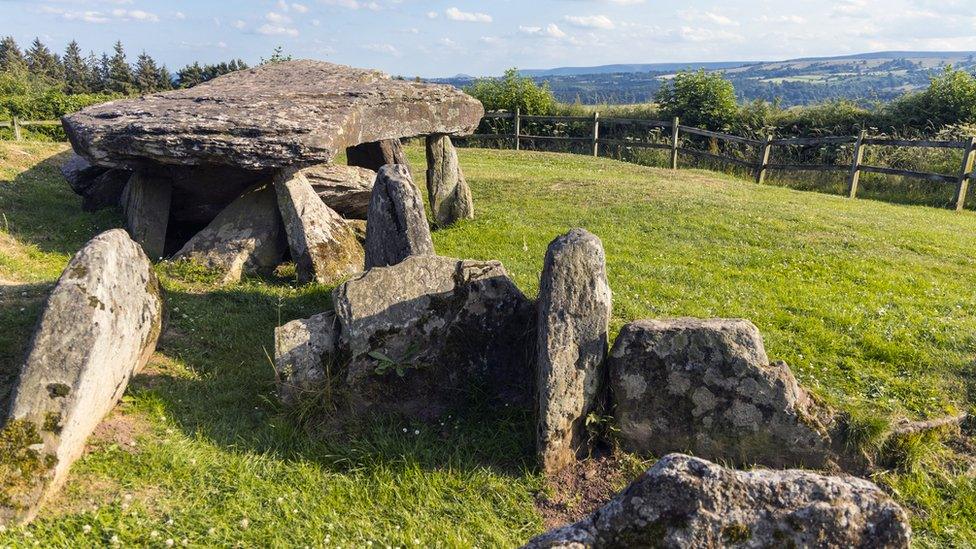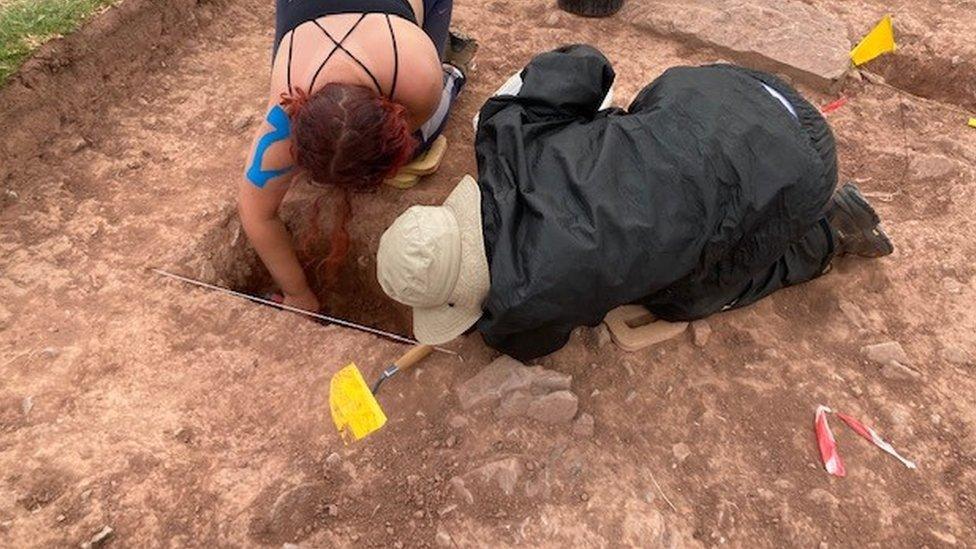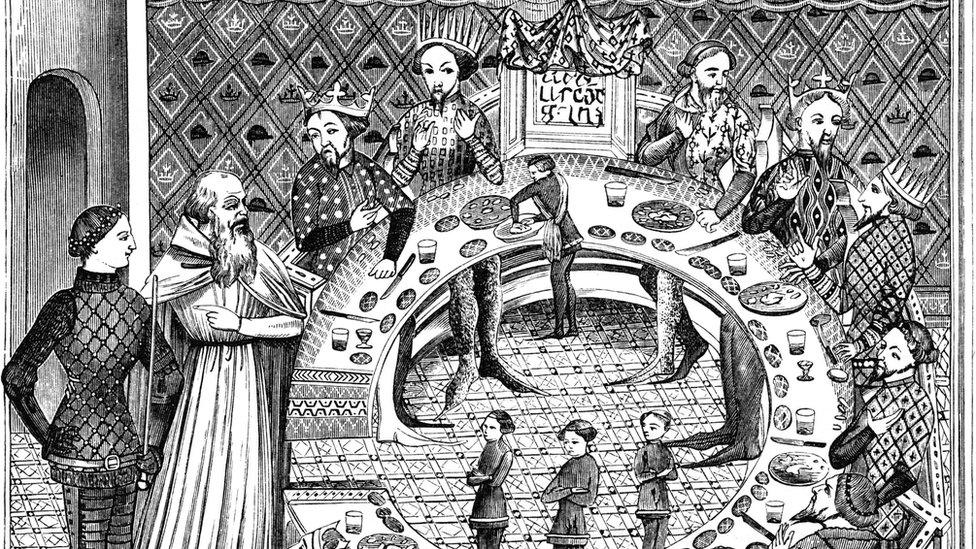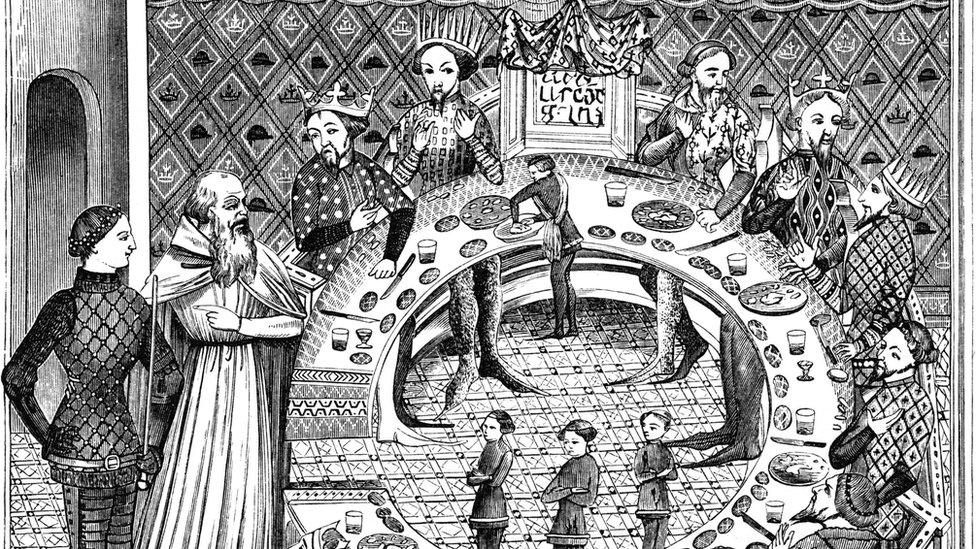Dig to unlock mysteries of 'Arthur's Stone' in Herefordshire
- Published

The 5,000 year old stone is in Dorstone, Herefordshire
An historic stone formation said to mark the spot where King Arthur slew a giant is being excavated.
An archaeological dig at Arthur's Stone in Dorstone, Herefordshire, will be the site's first excavation and historians hope to reveal its secrets.
Experts from English Heritage and the University of Manchester said the stone is one of the country's most significant prehistoric monuments.
However archaeologists say its history is "poorly understood".

Excavations are taking place until the end of the month
The stone slabs, set in the hills above Herefordshire's Golden Valley, form a Neolithic burial chamber.
The 5,000-year-old chamber is formed by nine upright stones with a capstone on top which is estimated to weigh more than 25 tonnes.

Historians say the site is significant but poorly understood
It has informed legends, with indentations on its surface said to have been made as the giant fell backwards after being slain by King Arthur.
The stone was also the inspiration for the sacrificial altar of Aslan in C.S. Lewis' well-loved tale, The Lion, The Witch and the Wardrobe.
"Arthur's Stone is one of this country's outstanding prehistoric monuments, set in a breath-taking location, yet it remains poorly understood," said Prof Julian Thomas, who is leading the project.
"Our work seeks to restore it to its rightful place in the story of Neolithic Britain".
English Heritage has invited visitors to take part in the tours about the excavation, which is due to finish at the end of the month.

Follow BBC West Midlands on Facebook, external, Twitter, external and Instagram, external. Send your story ideas to: newsonline.westmidlands@bbc.co.uk, external
Related topics
- Published30 July 2017

- Published18 December 2016
